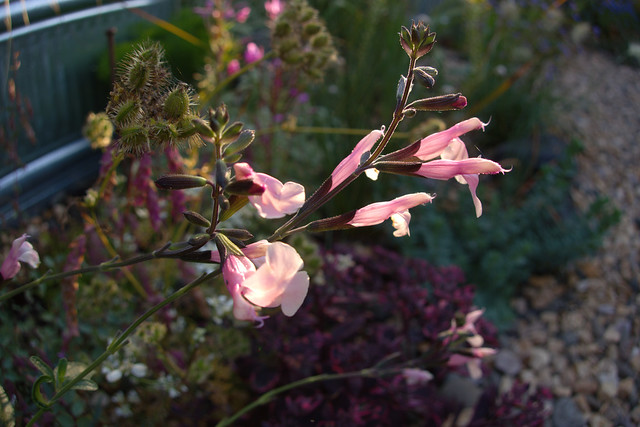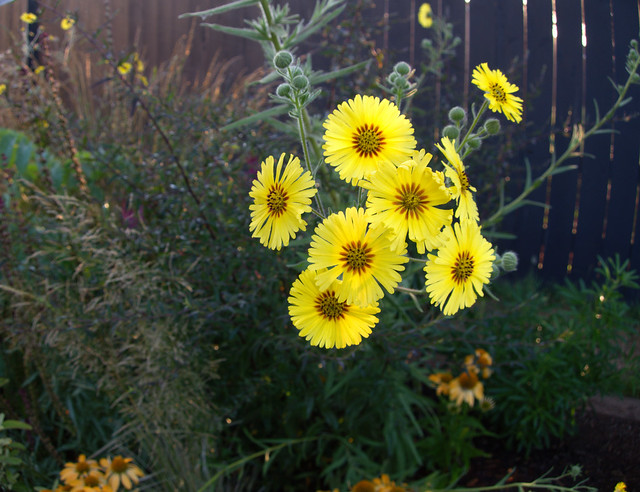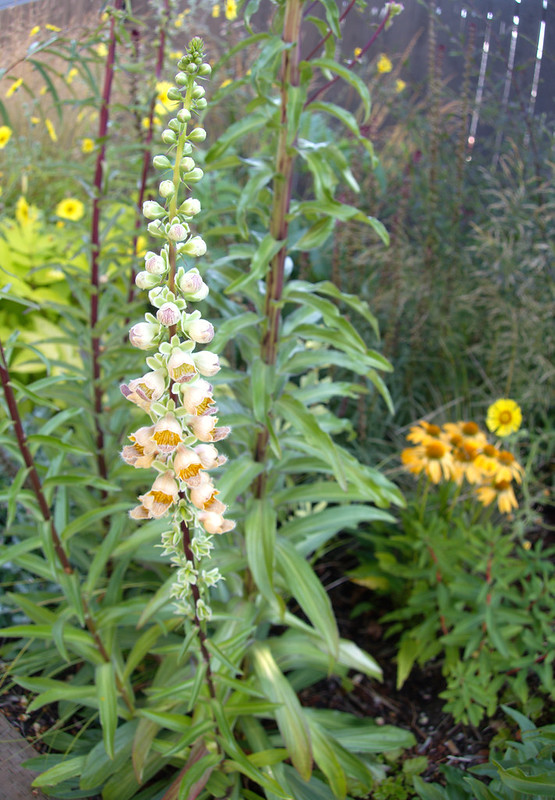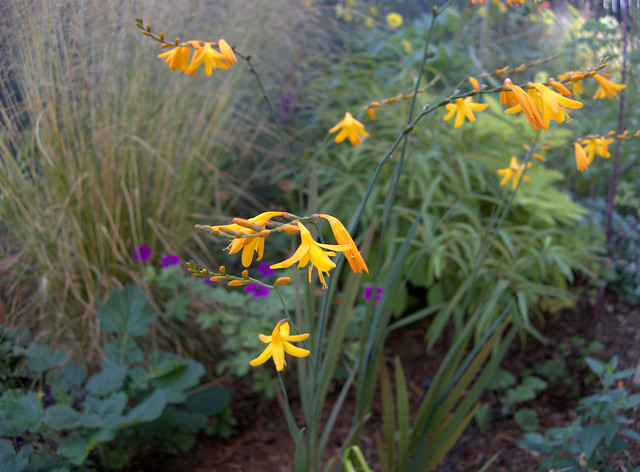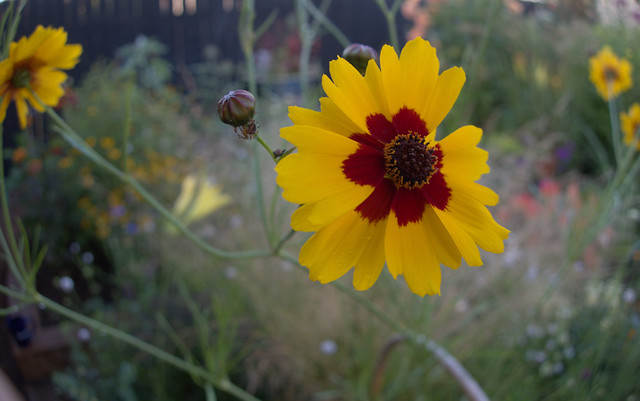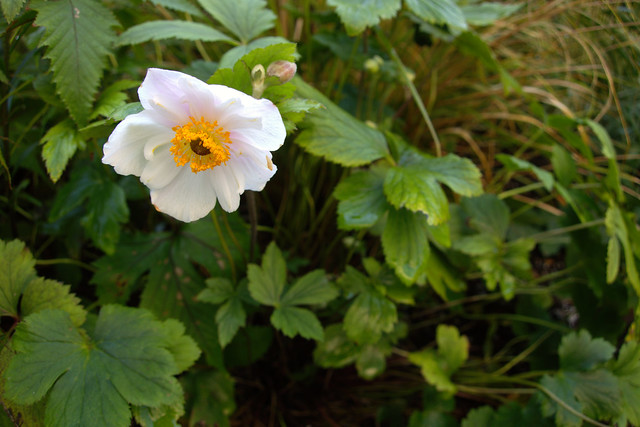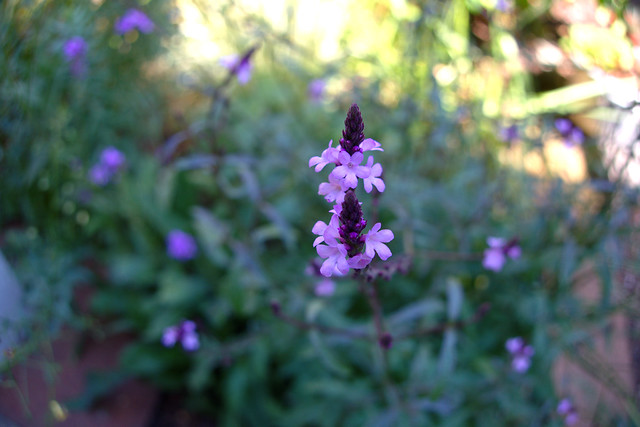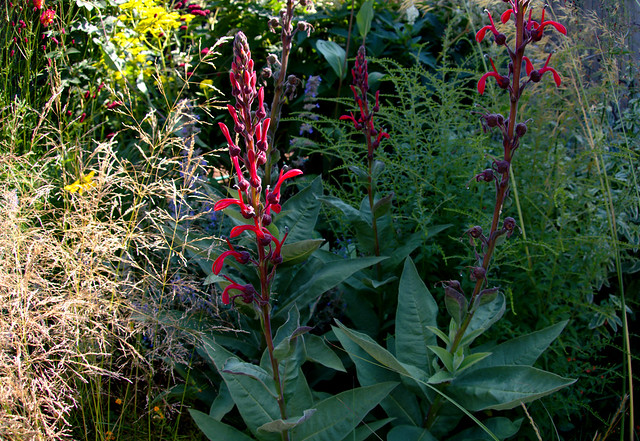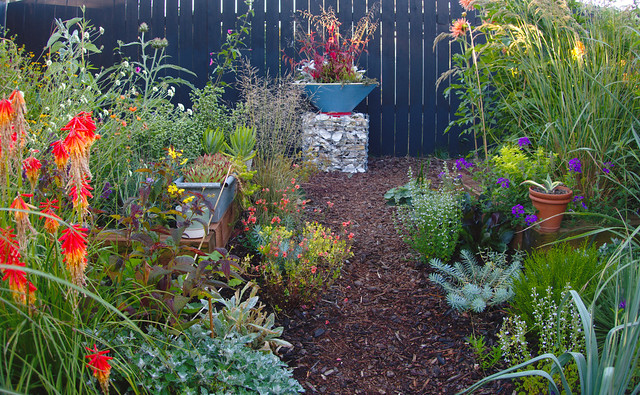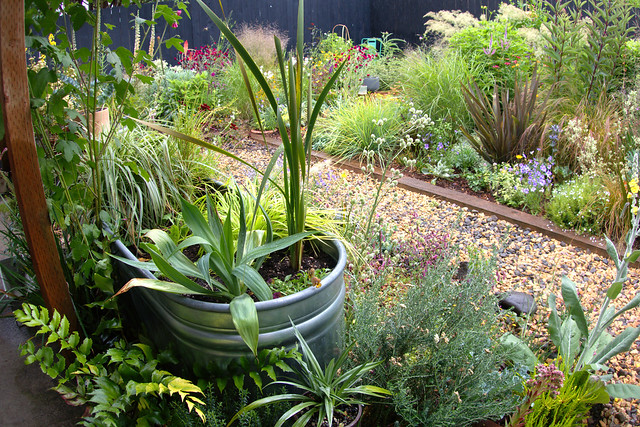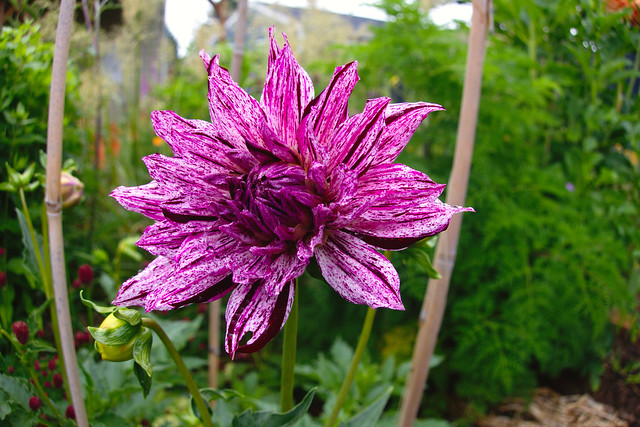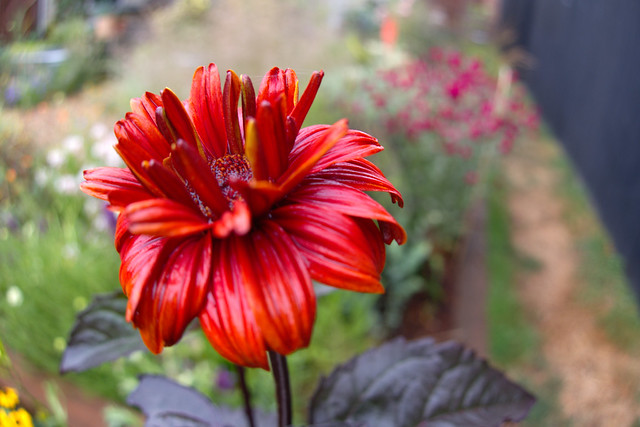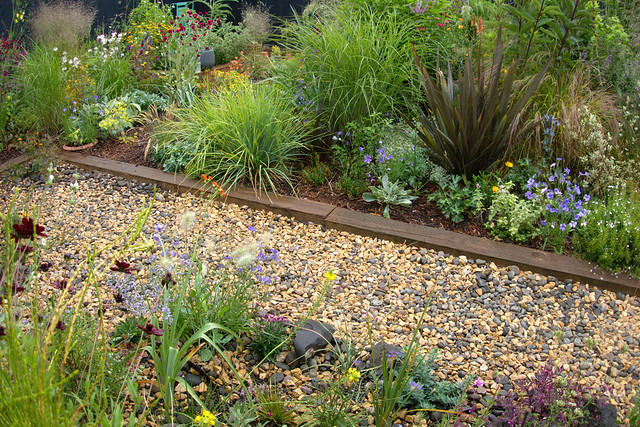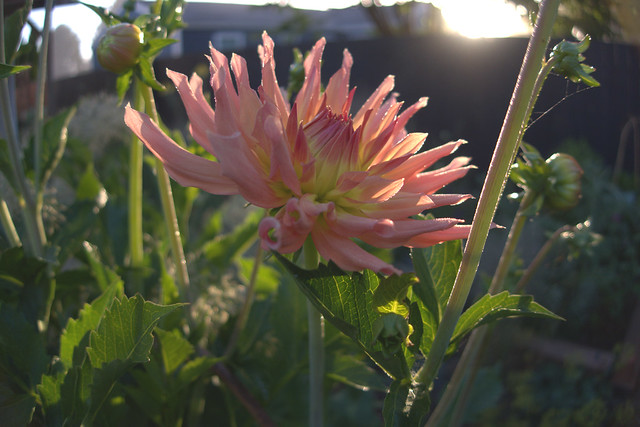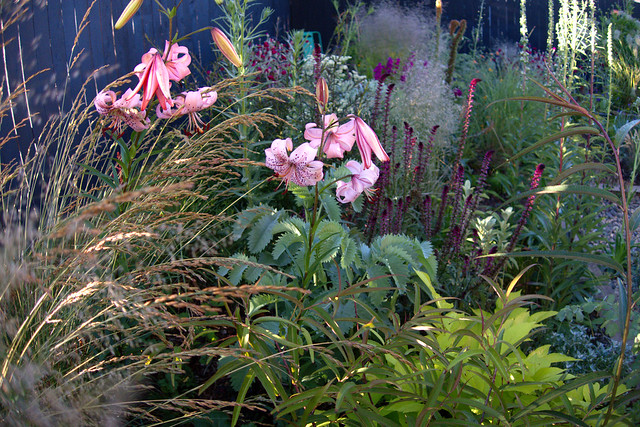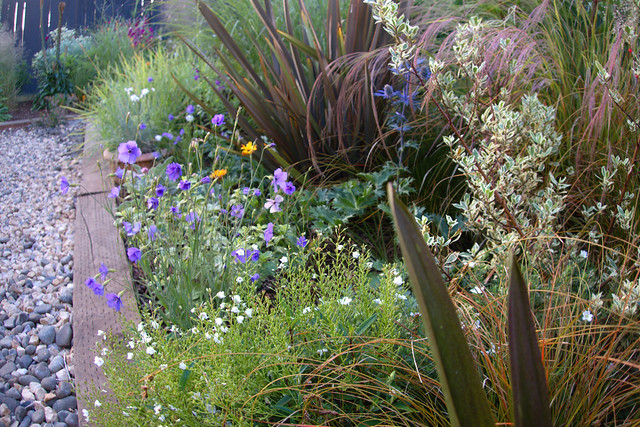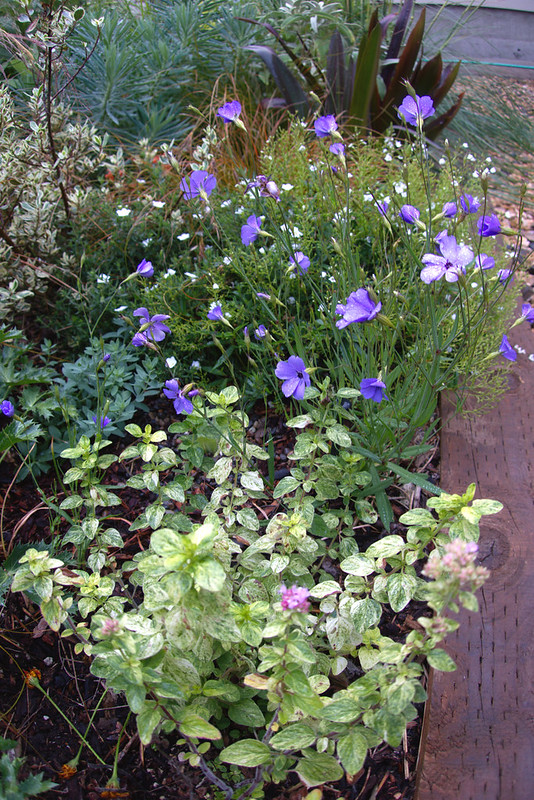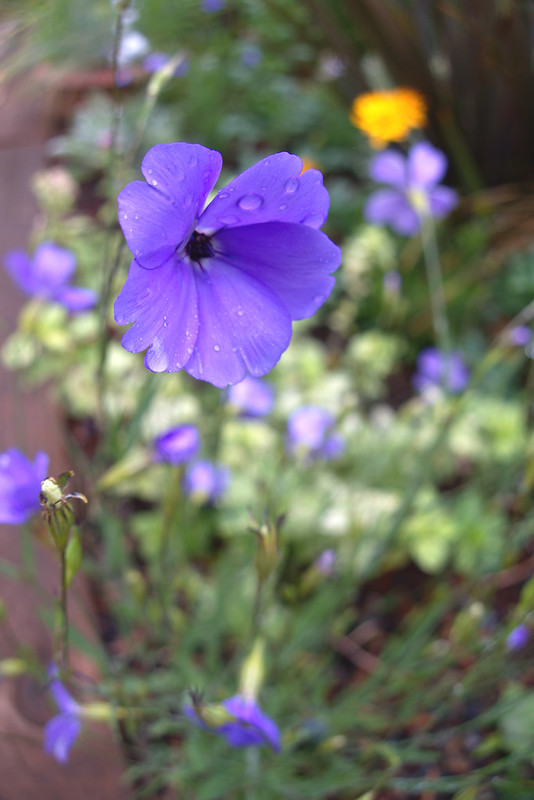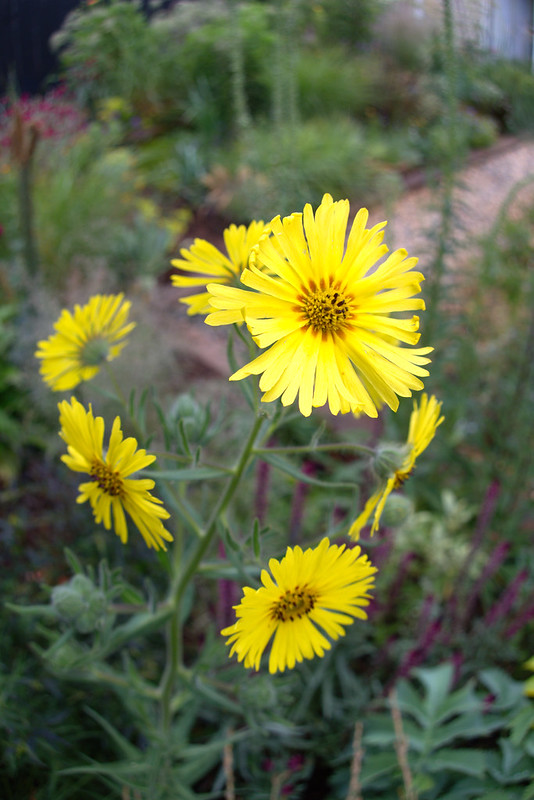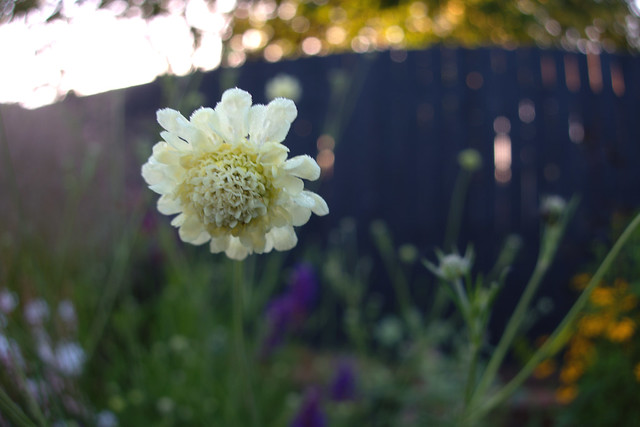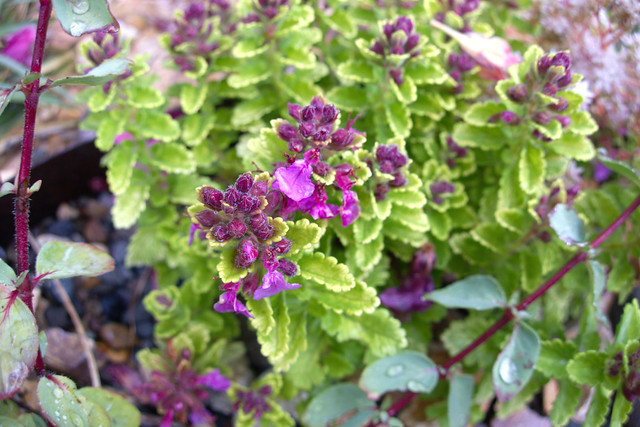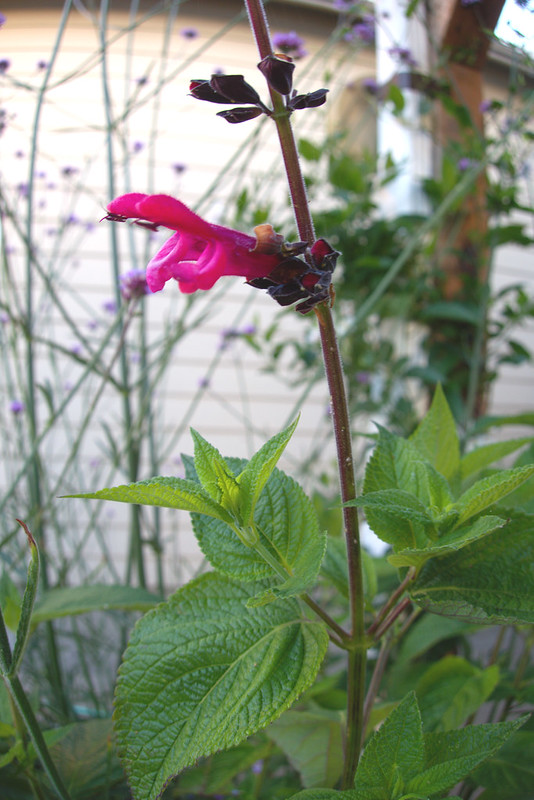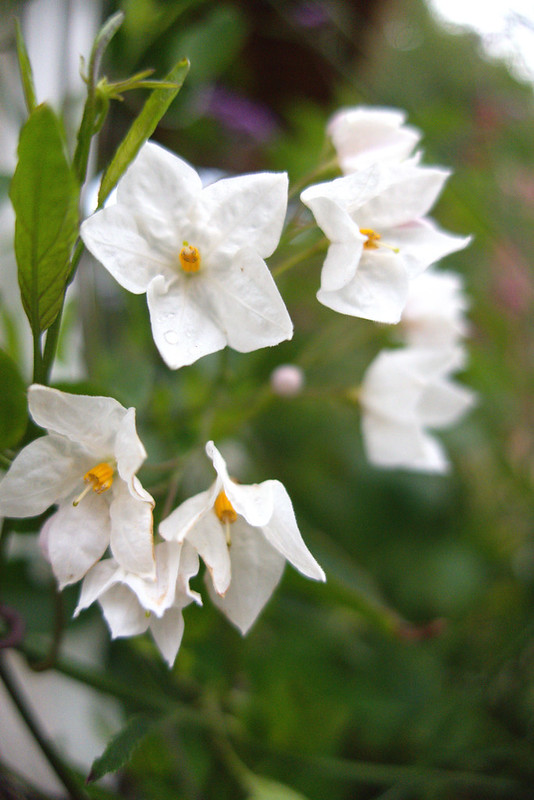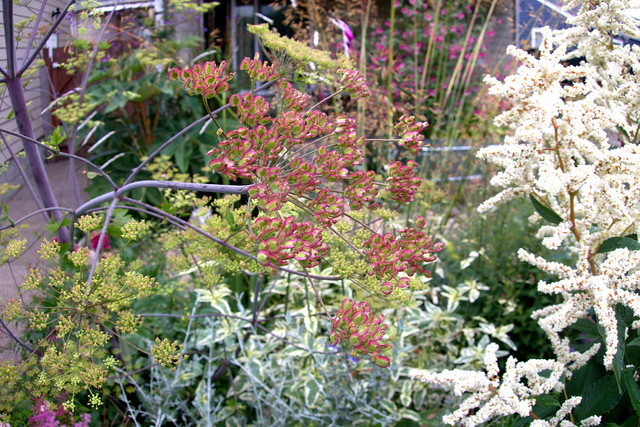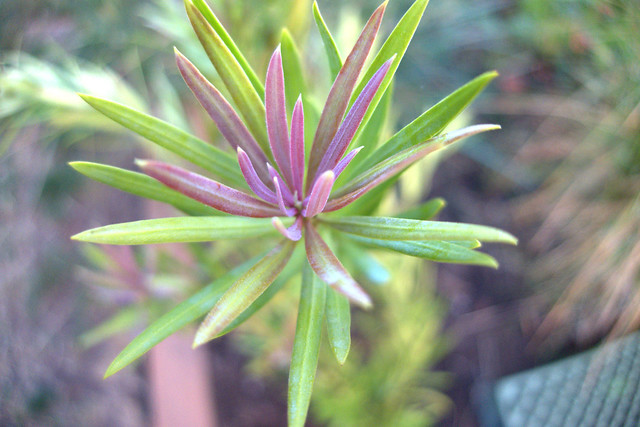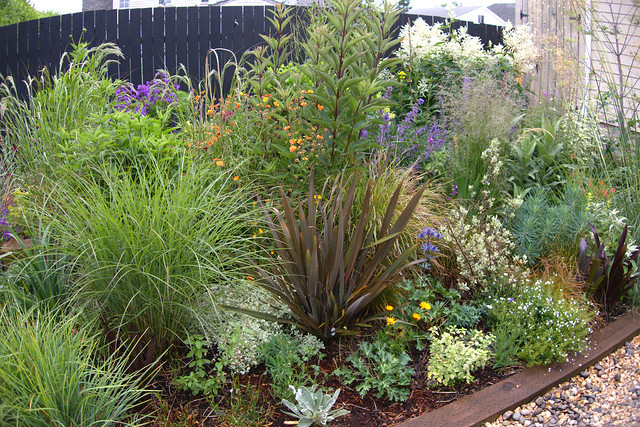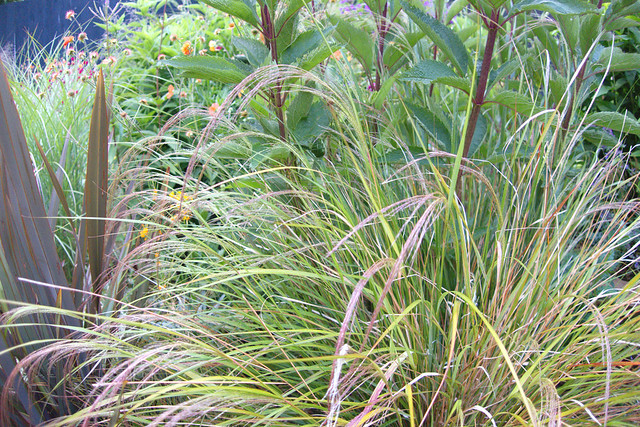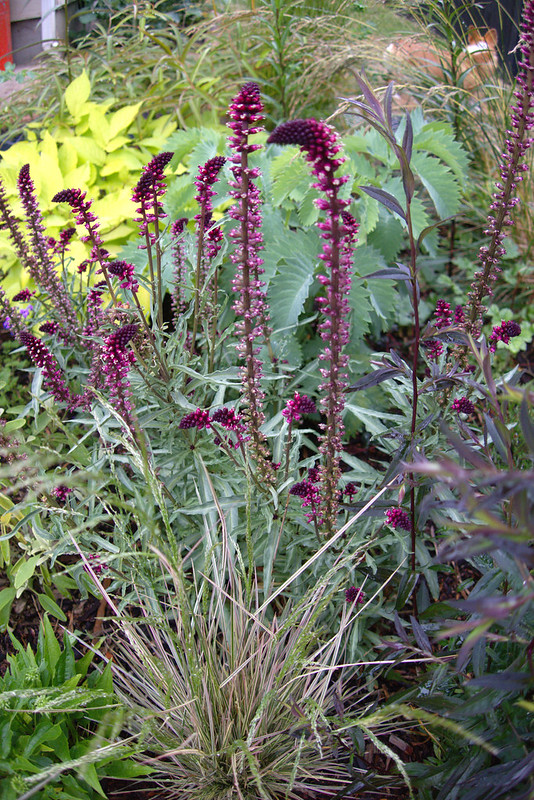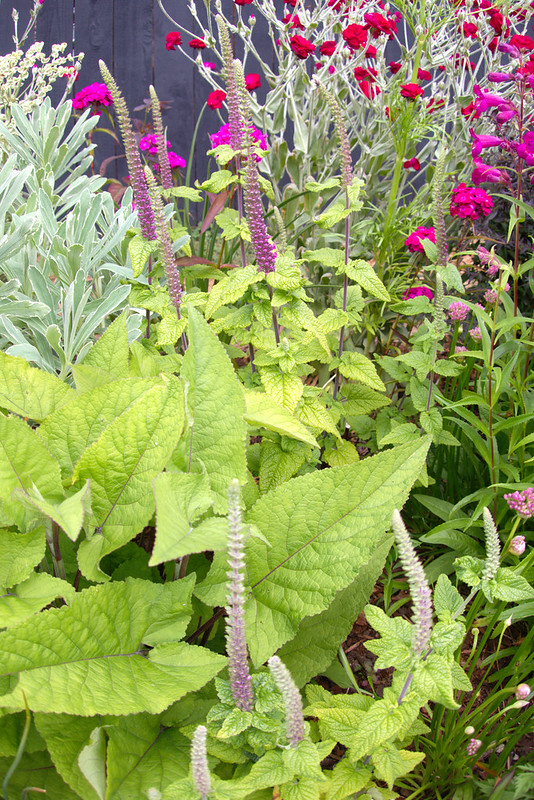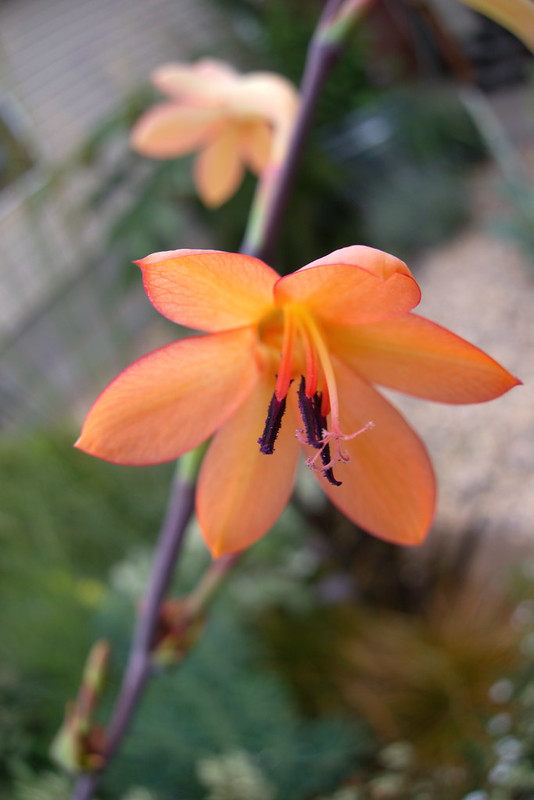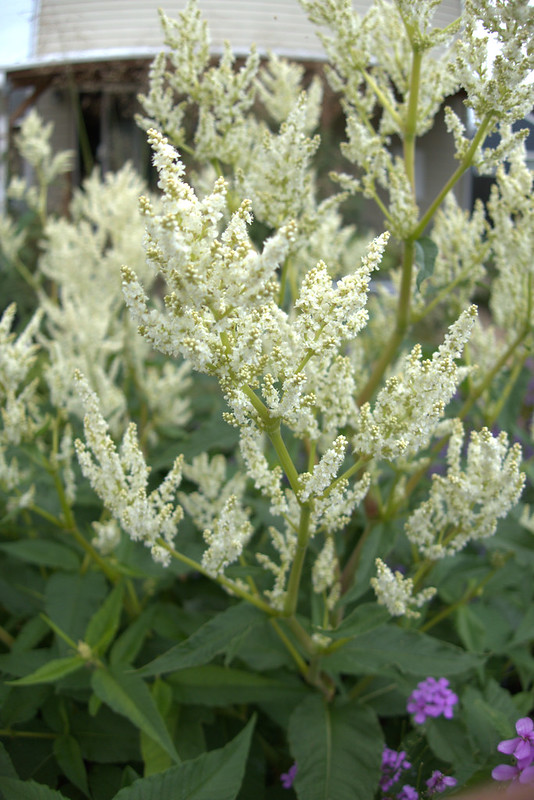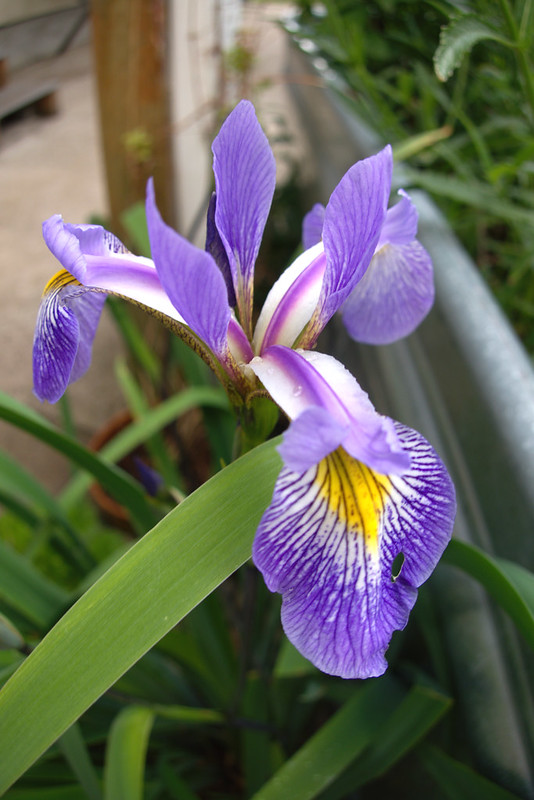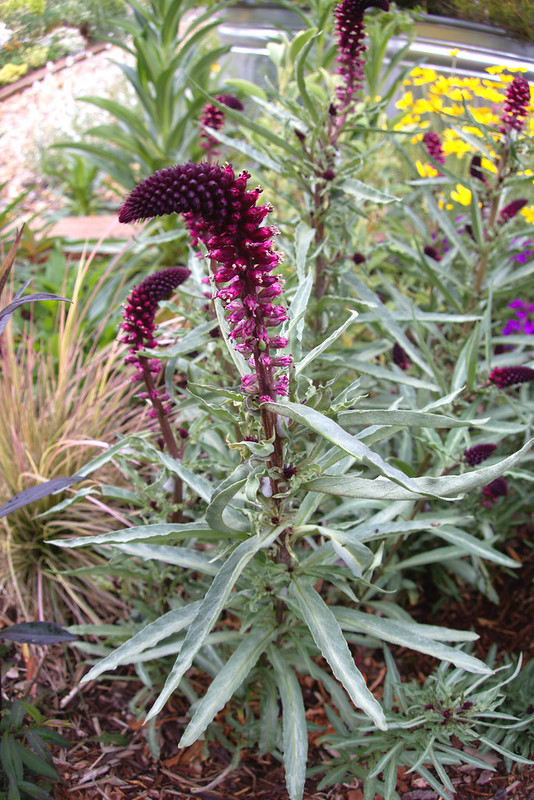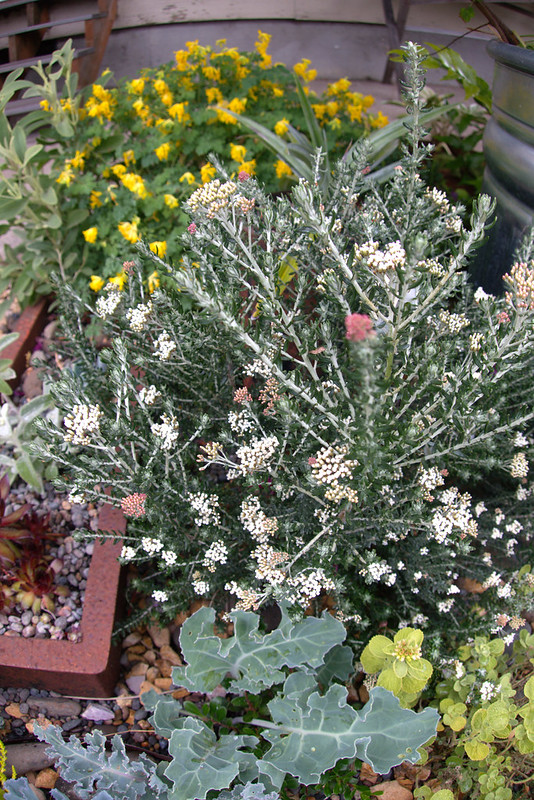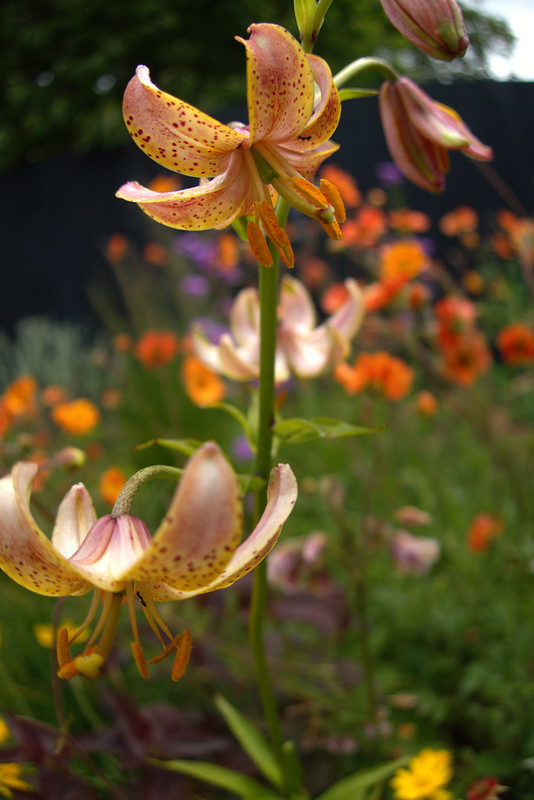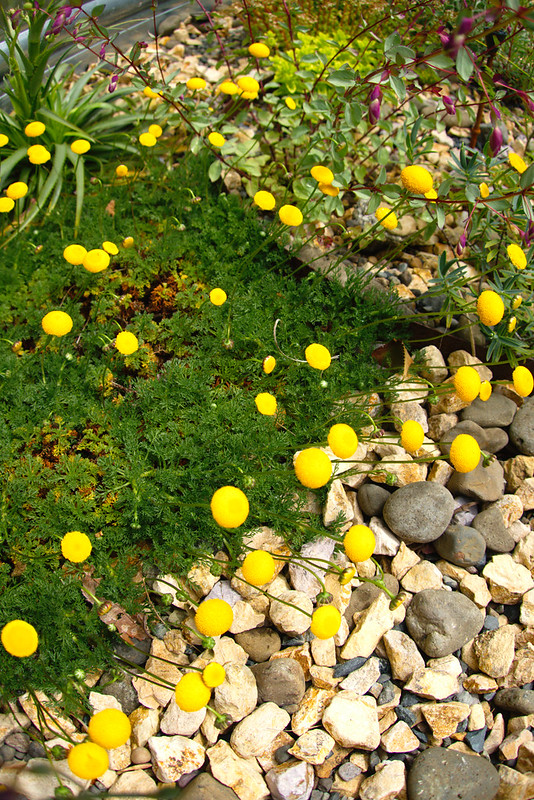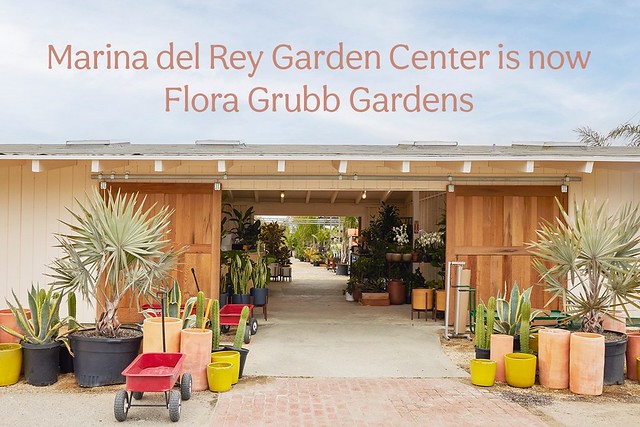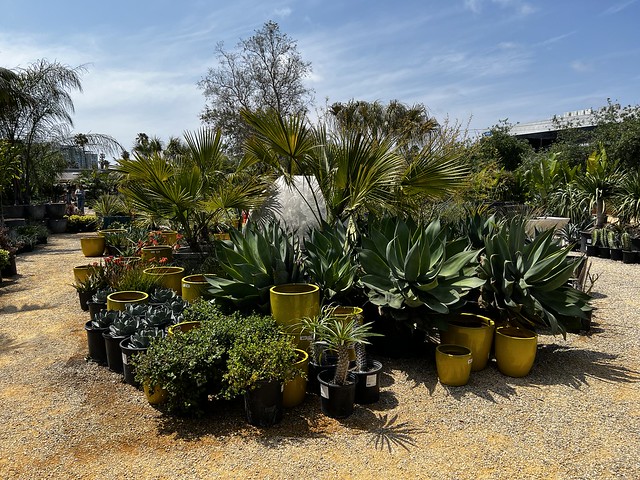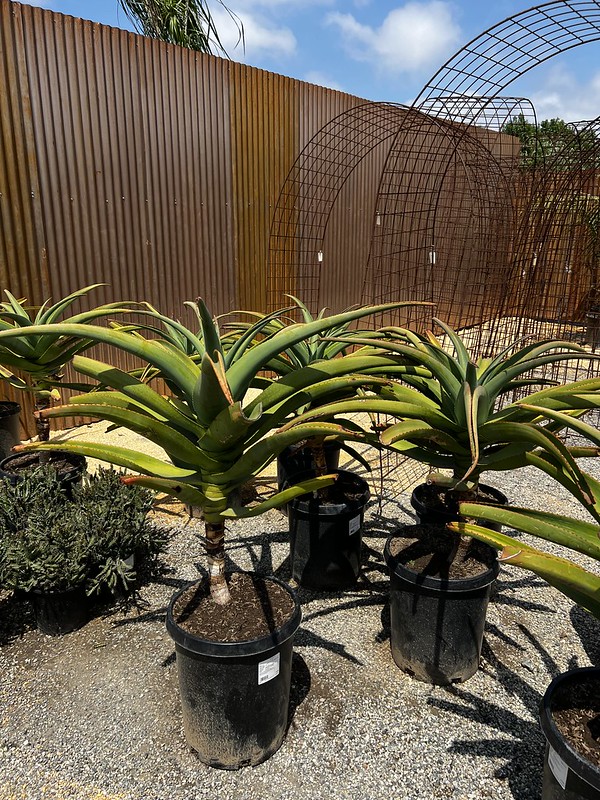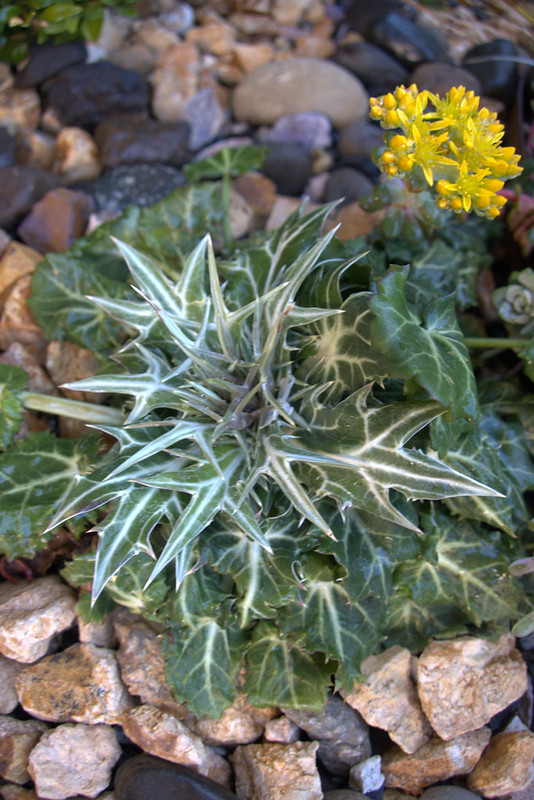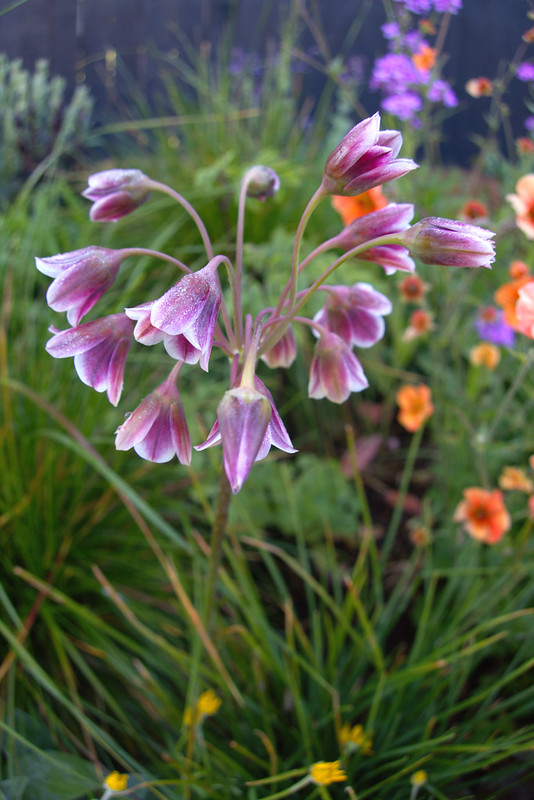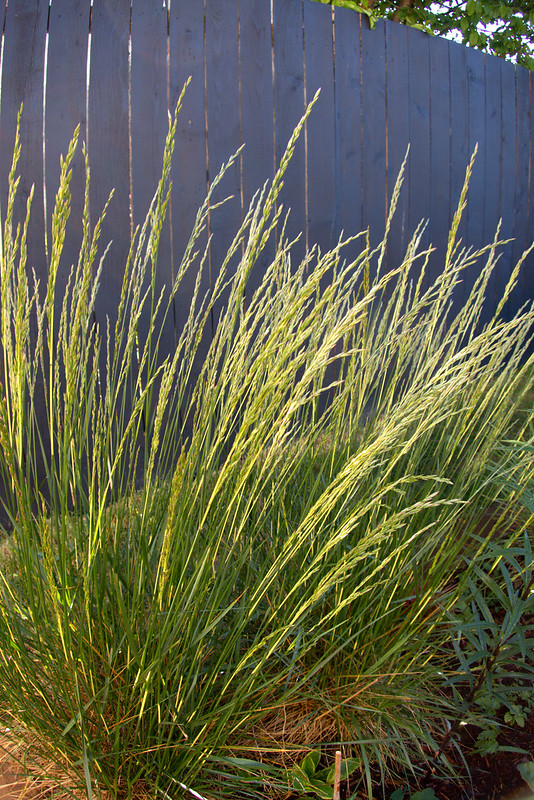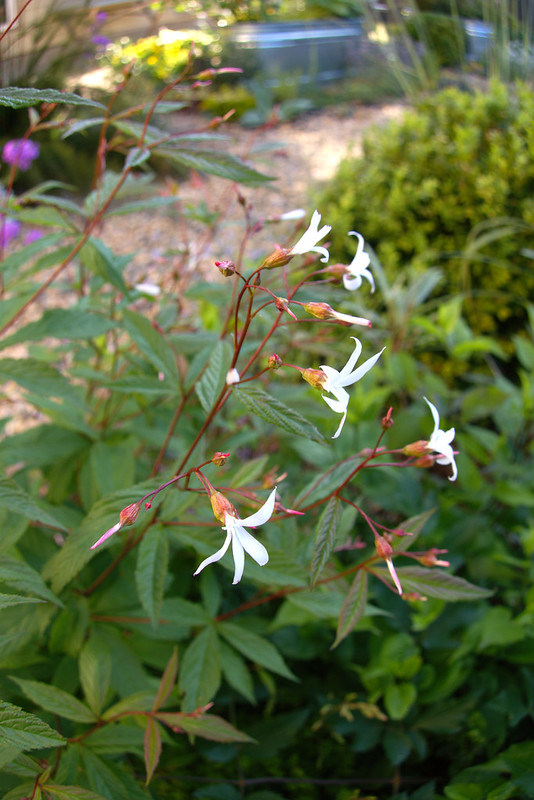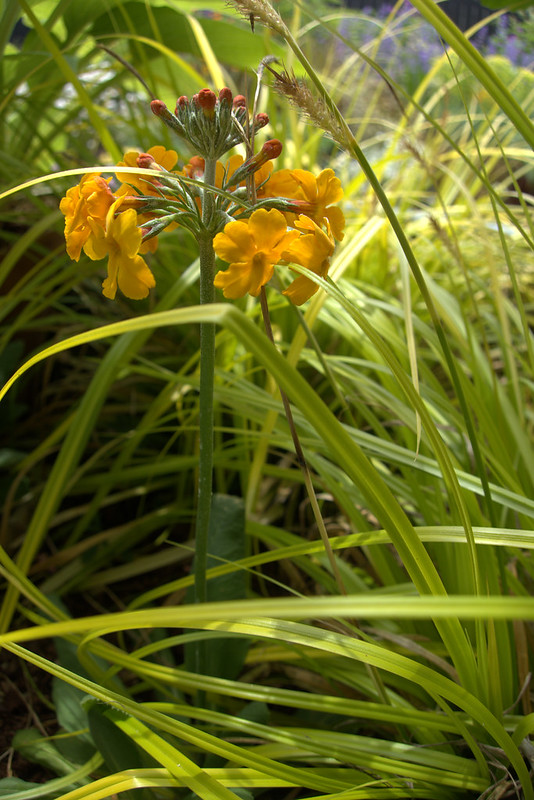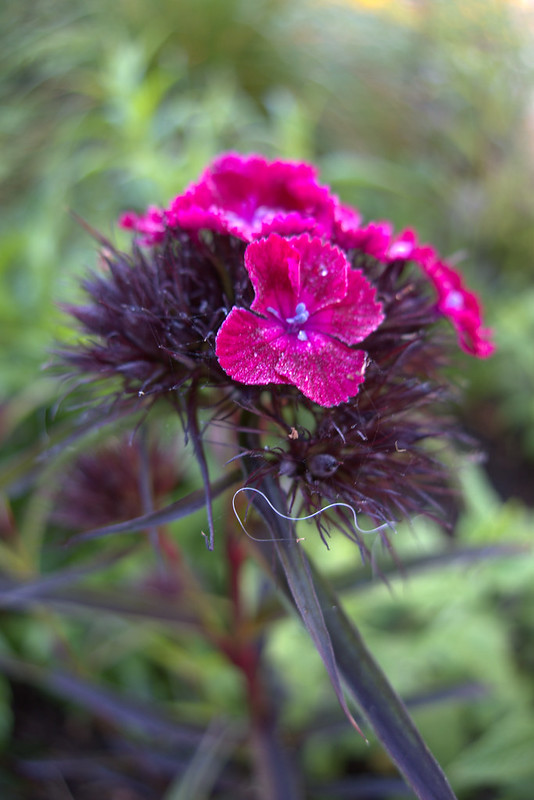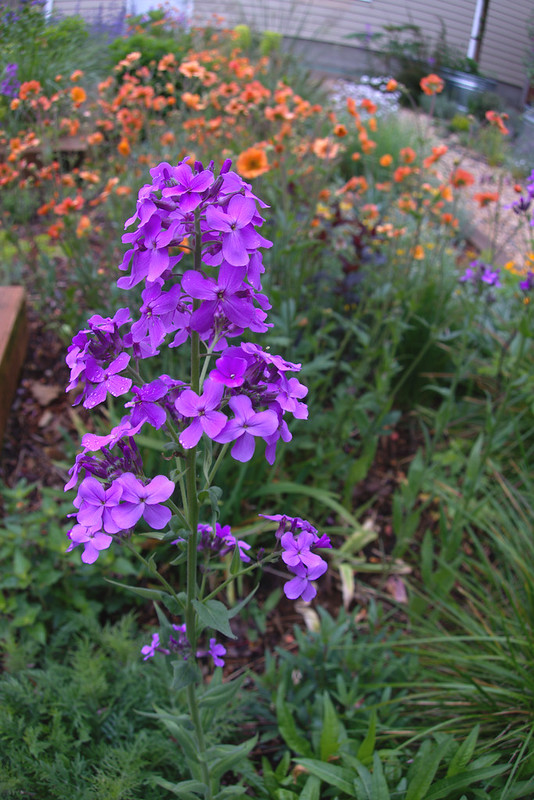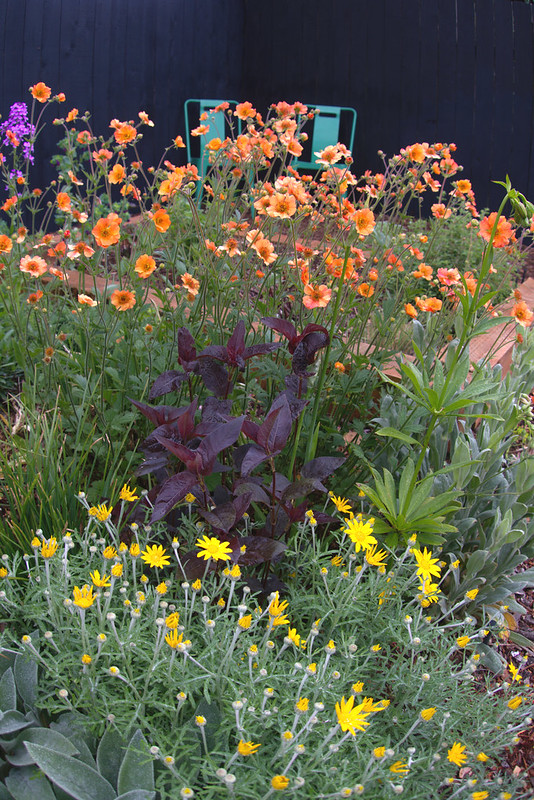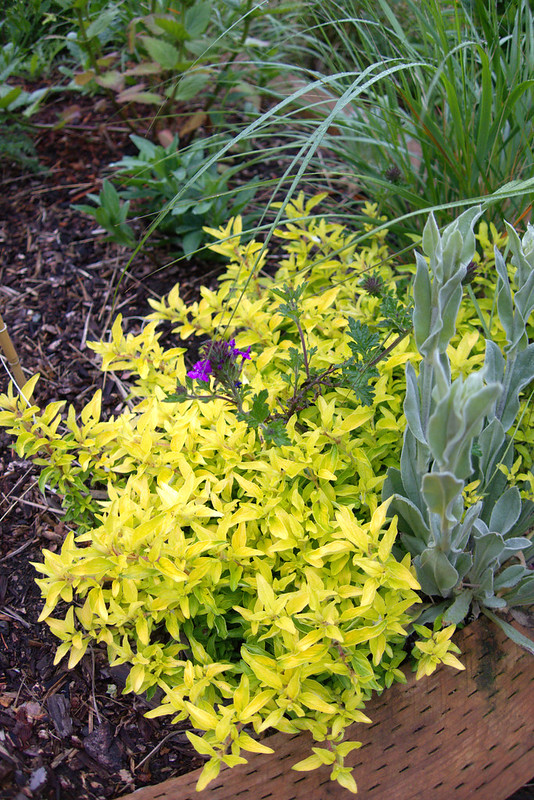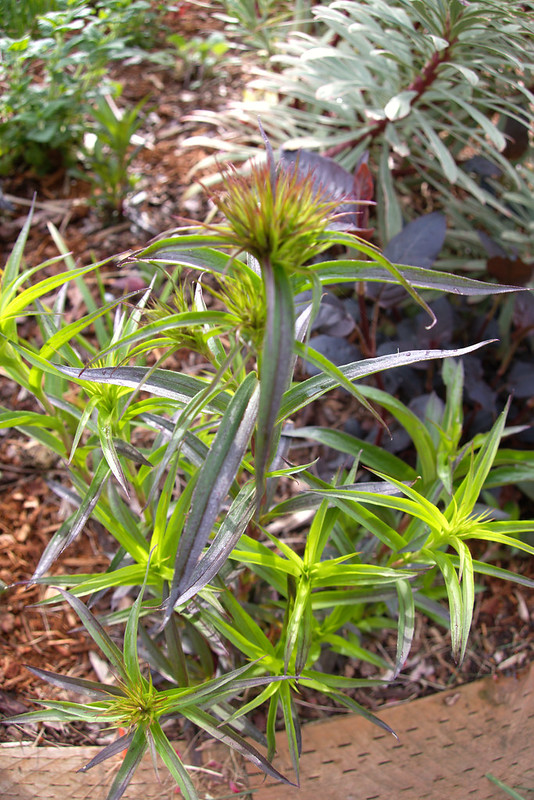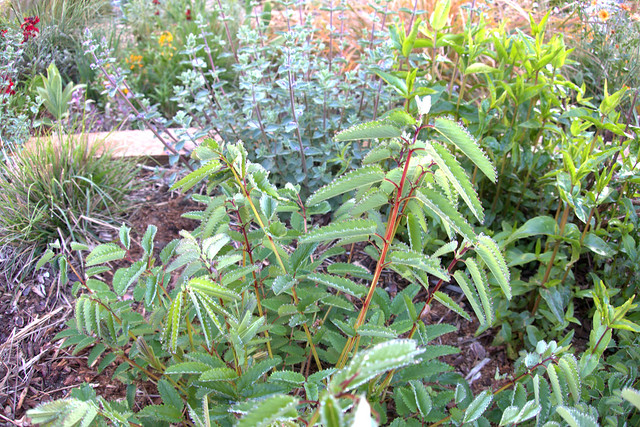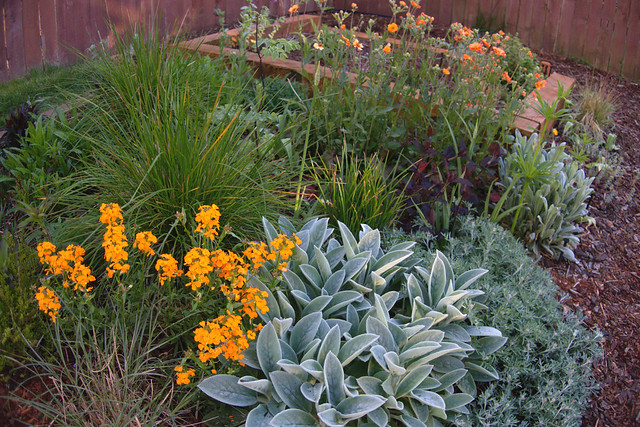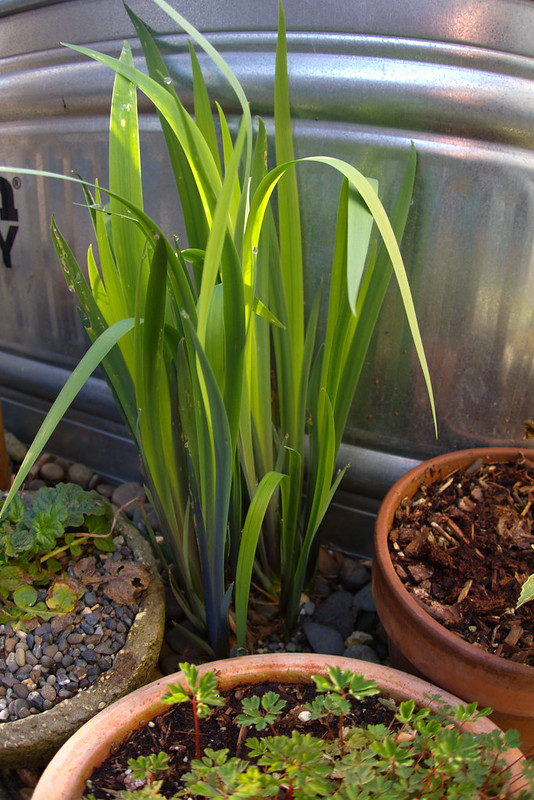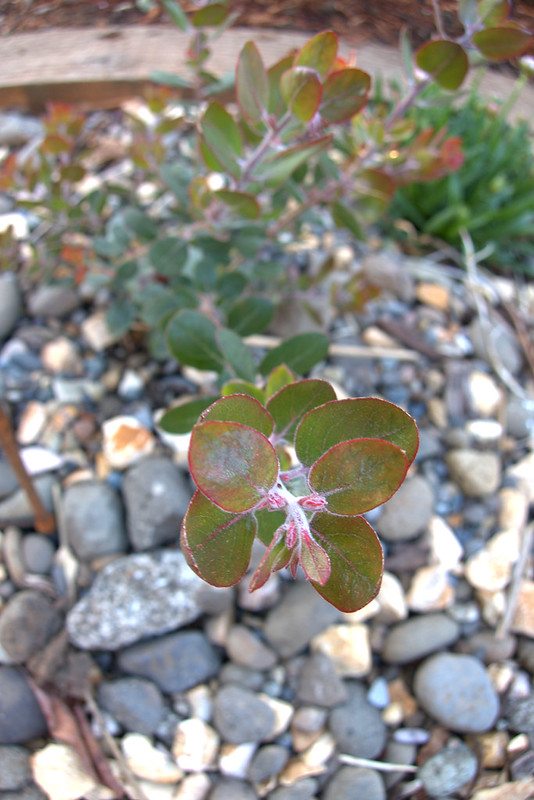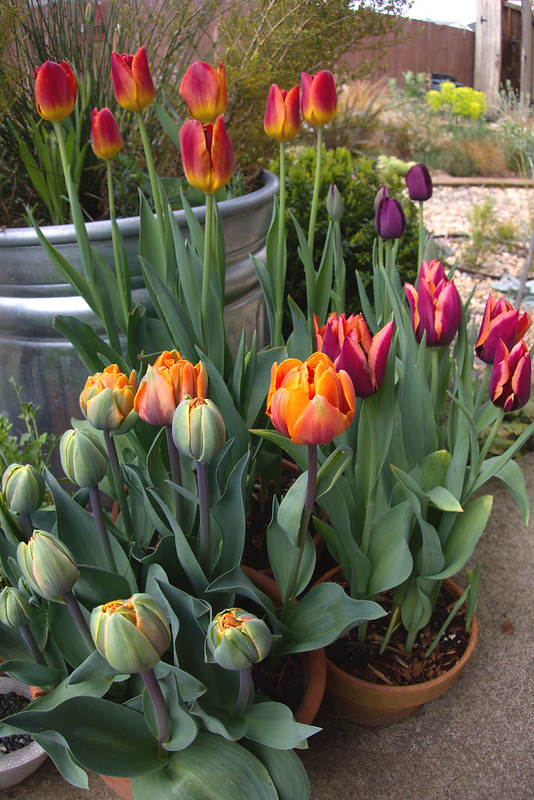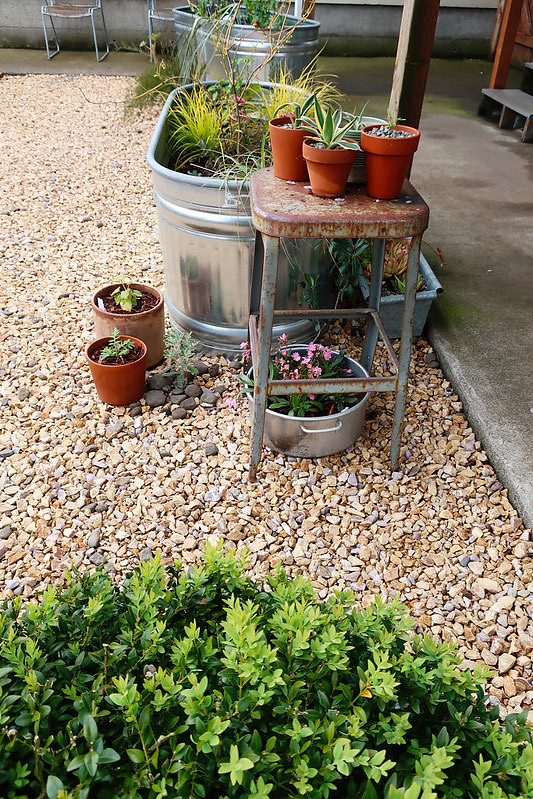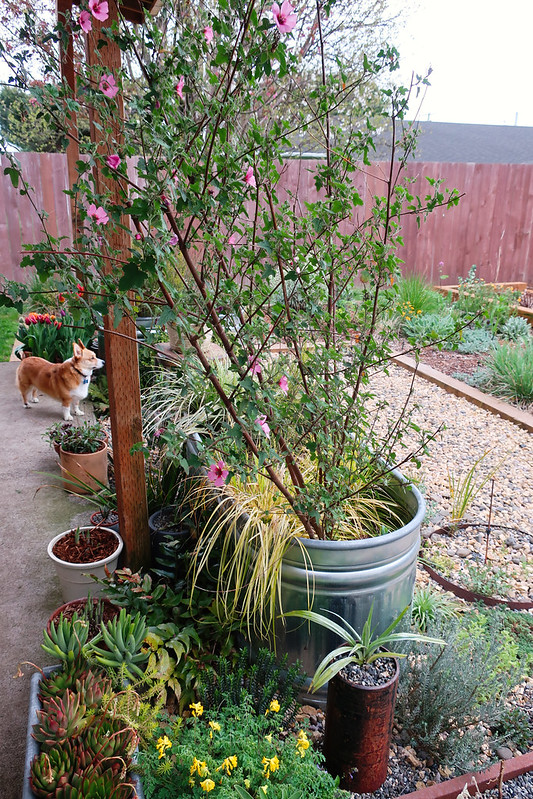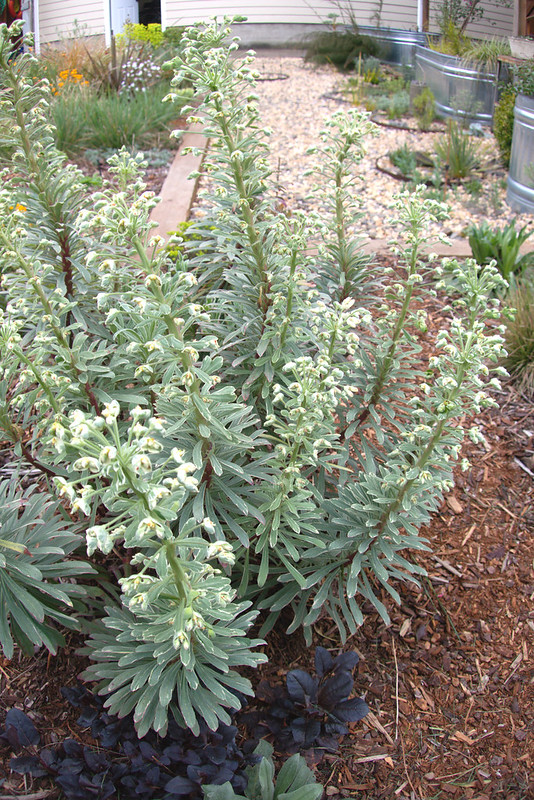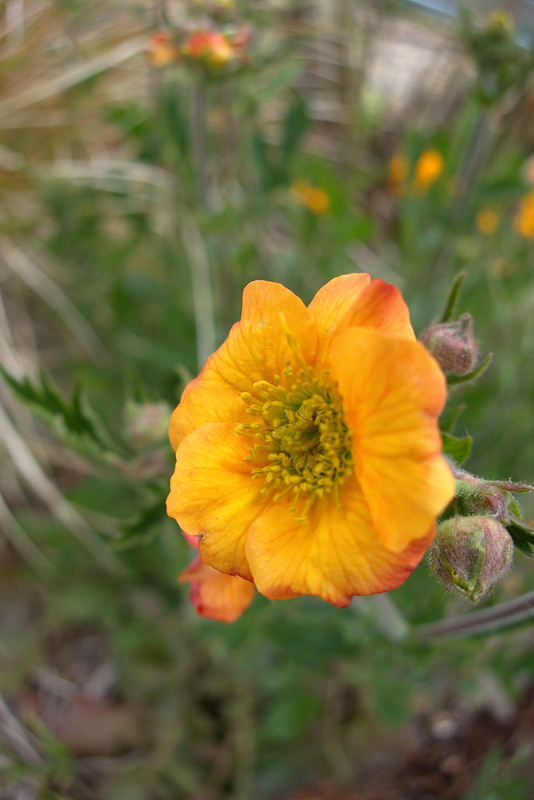This little Salvia greggii pushing out a few blooms this week is emblematic of how small, well-timed interventions can mean a lot, especially in small gardens. The salvia was getting swamped in a stock tank and it became a case of move it or lose it. So it was transplanted into the gravel in front of the tank maybe a month ago and trimmed back a bit. And that’s how I was gifted with this translucent performance this morning. I’m very curious how salvias like these greggii/microphylla will perform here. I’m hoping til frost, of course. Just a few can make such a difference in late summer. Also growing ‘Nachtvlinder,’ ‘Mesa Azure,’ which wintered over, and ‘Amethyst Lips‘ — ‘Oriental Dove.’
The annual Madia elegans is sprawling its 5-foot stems in all directions, over the melianthus and aralia. I say sprawl away, because every day there’s a new association to appreciate by virtue of its clever insinuations into surrounding plants.
Crocosmia grows like mad in coastal Oregon. For the most part, they appear to be the dark red ‘Lucifer.’ I skip a lot of easy-going plants I’m seeing locally but made an exception for crocosmia. Nice leaves, nice timing of bloom in mid to late summer. For a homework assignment, I dare you, go ahead and choose a crocosmia. It’ll make you crazy, there are so many cultivars, and to the uninitiated (me) the differences seem slight. I defaulted back to an old cultivar ‘Solfatarre’ I have grown in zone 10. Surprised me by blooming after an early summer planting.
Second summer for Heliopsis ‘Bleeding Hearts.’ Kind of a thin performance? I like it fine. Sure, helenium has masses more flowers, but that comes with masses of leaves. Heliopsis serenely floats over its neighbors, slim footprint, good manners, not too pushy.
The next photos are from the southeast corner of the garden, that has to contend with the neighboring tree roots just over the fence. Here all the fizzy, floating things congregate, coming into full bloom in August. In addition to the heliopsis, there’s gaura, Scabiosa ochraleuca, Succisella inflexa, Rudbeckia triloba, agastache.
A pale mass of froth and foam, static in photo, but a dynamic little corner that draws me in every morning. Dechampsia ‘Goldtau’ has been good here since spring, now casting a gold net through the planting.
A lackluster photo of some plants that deserve better. The grey leaves belong to mountain mint, Pycnanthemum muticum, backed by Joe-Pye weed. Apparently I have the same taste in plants as insects do. I love the buxomy, plush grey mounds of mountain mint and planted it for these attributes, not knowing of its renown for attracting pollinators. Now I know!
Apart from red clover, I’ve never seen another plant bristling with so much buzzy activity.
Since I arrived in coastal Oregon, I’ve been determined to find a use for the easily obtained oyster shells that form large mounds/middens along the coast. Huge amounts are consumed from the local bays. Without equipment to crush the shells for pathways, my bags of oyster shells lay idle over winter in the vegetable garden. A mail-order gabion was the answer, topped with a former bridge light shade gifted from a blogger meet-up last fall. I’m beginning to feel like a local now! More August Bloom Day stories at May Dreams Gardens.

